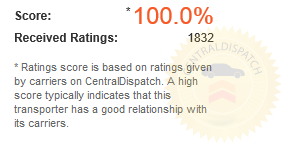How to yield to an emergency vehicle
The penalty for not yielding
Final word

How to yield to an emergency vehicle
If you are driving and you see an emergency vehicle such as an ambulance or police car with their lights and or sirens on behind you, then you must yield to that vehicle. That essentially means get out of their way as long as it is safe for you to do so. You should do whatever you can to yield to your right side so the emergency vehicle can pass on the left, but if yielding left is all you can do, that is better than doing nothing.
Be sure if you are changing lanes and/or pulling over that you do so safely. Check your blind spot and mirrors before you do, make sure that you signal before you do and do so at a safe speed. Keep in mind, yielding to an emergency vehicle who has their lights or siren on is the law and there are penalties for failing to do so.
The penalty for not yielding
In Alaska, failure to yield to an authorized emergency vehicle is a serious offense. You will be fined two hundred and fifty dollars as well as get six points on your license. The point system in Alaska for traffic violations dictates that any driver who gets twelve points on their license in twelve months or eighteen points in twenty-four months will have their license suspended for up to a year.
For example, that means if you get a failure to yield to an authorized emergency vehicle ticket in January, and then you are caught driving over the speed limit by only ten miles per hour twice in the next eleven months, your license will be suspended.
You might question “What exactly counts as an emergency authorized emergency vehicle?” Well, in Alaska, the following vehicles are considered authorized emergency vehicles: all ambulances, all police vehicles, all fire trucks and vehicles, all corrections vehicles, all armed forces vehicles, all blood delivery vehicles, all hazardous materials and all sanitation patrol vehicles. In short, if you see flashing lights on a vehicle behind you then yield.
Final word
Yielding to an emergency vehicle in Alaska is important because you can slow a first responders’ response to an emergency. For example, you need to let an ambulance by because it might be EMTs responding to a heart attack victim. Regardless, when you do yield to an authorized emergency vehicle, you should always do so safely. If you do not yield to an authorized emergency vehicle in Alaska, the penalty will be steep with a two hundred and fifty dollar fine as well as six points added to your license.


